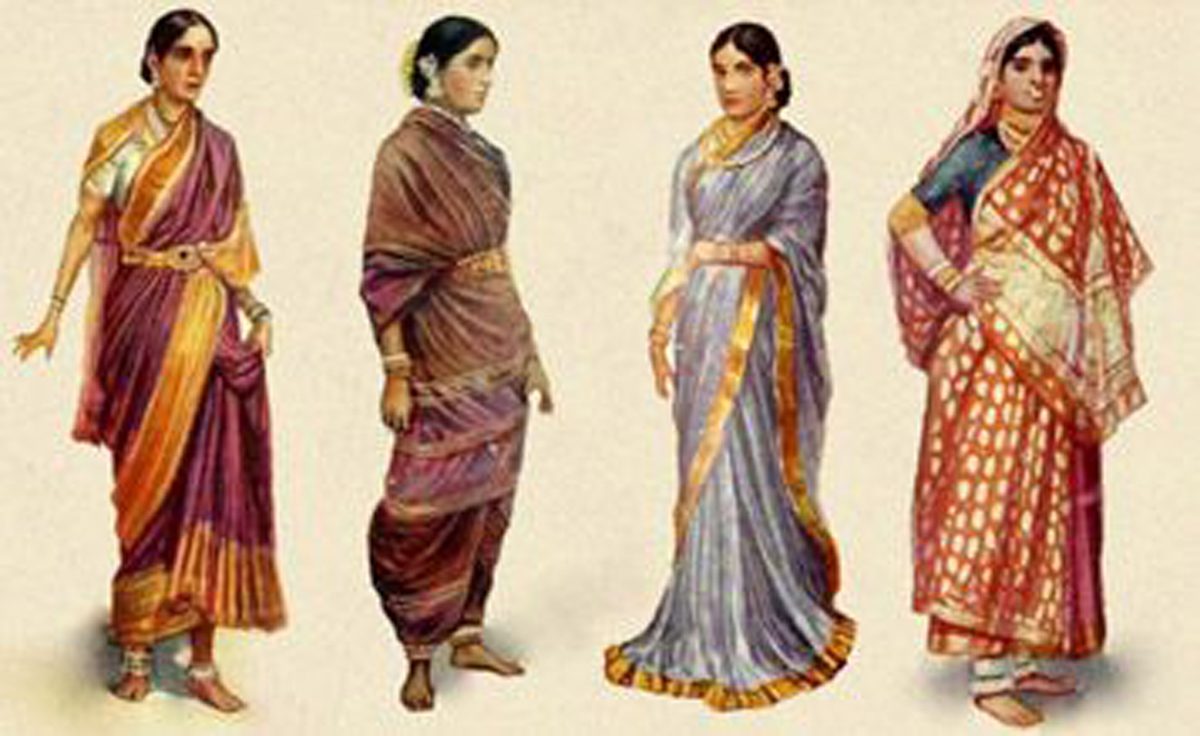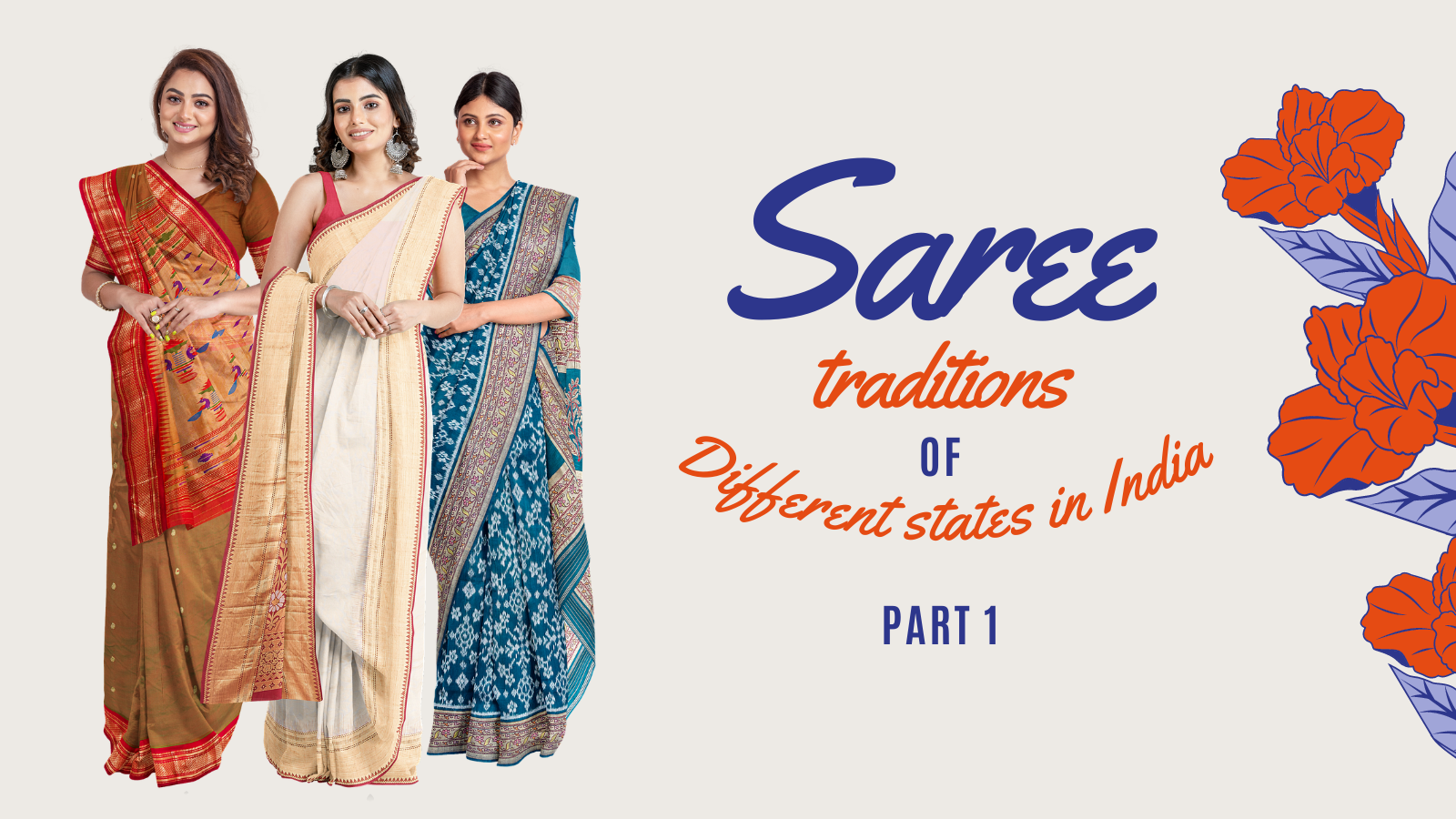
87 History of the Indian sarees and party wear sarees Fashion and Design
Find out all about the saree & its 5000-year history with this ultimate saree guide!Make sure you subscribe and never miss a video: https://goo.gl/FOVoGPFor.

The Evolution of a Tradition called Saree YouTube
History and Importance of Sarees. All the traditional forms and styles are being universally adopted and new designs are being constantly invented to captivate the style-loving women all over the world. Sarees have made deep inroads into fashion today with people exploring new fashion statements about this Indian garment.

History of Kanchipuram Saree
Origin of Saree. It is a fact that the civilisation of Mesopotamian was the cause of bringing this Saree to India. Some of the roots of this garment date back to the era of Indus Valley along with various other places such as Assyria, Sumer, and Egypt. Few other historical evidence suggests, Ancient History of Saree exists for more than 5000 years.

The Enchanting Story of the Indian Sari I Different Truths
The surprising history of India's vibrant sari tradition. South Asian women have draped themselves in colorful silks and cottons for eons. The ways they're made and worn are dazzling and.

87 History of the Indian sarees and party wear sarees Fashion and Design
The earliest known reference to the saree can be found in Rigveda, one of the oldest sacred texts of Hinduism, which dates back to 1500 BC. In this text, the saree is described as a garment draped over the body and held in place by a belt. It is believed that the saree originated in the Indus Valley Civilization, where it was worn by both men.

History of Patola Sarees The classic colors and designs of Patan patola sari make it a standout
History of The Saree Blouse: The Incredible Evolution of The Must Have Companion To Indian Sarees. Jun 21, 2019. When we regard the magic of the six yard drape that is the quintessential attire of most Indian women, we are filled with pride and wonder at the journey of this unique untailored garment. We admire the grace of the Indian Saree.

87 History of the Indian sarees and party wear sarees Fashion and Design
The origin of the drape or a garment similar to the sari can be traced back to the Indus Valley Civilisation, which came into being during 2800-1800 BC in north west India. The journey of sari.

Story of Indian Saree History, Heritage and Draping by TRI3D Part I
The word saree is derived from the Sanskrit word 'Shatika' meaning a long piece of cloth. Ancient Indian philosophy has opined on the importance (or rather a superiority) of un-stitched clothes over the stitched ones. While the philosophical arguments have their own place, our focus lies on the history of saree in the Indian subcontinent.

History Of Saree Industrialisation In India Saree For Women HerZindagi
Though saree is a fashionable garment now the history of a fabric humbly draped around the waist of a woman started thousands of years ago. The origin of a garment similar to saree or a fabric drape around a woman can be traced back to Indus Valley Civilization which came in to existence during 2800 - 1800 BC around the north western part of India The word Sari means "A Strip Of Cloth.

Pin by Kanan Dhamne on Indian Saree..!! Vintage india, Evolution of fashion, History of india
The saree is considered to have been evolved from a three-piece-attire consisting of unstitched stretches of cloth draped as a lower garment, a chest band and a piece worn over ones shoulder or head. This predecessor of the saree is mentioned in ancient Sanksrit literature dating to the 6th century B.C.E. Even lehengas, ghagras and cholis are.

The History and Evolution of Sarees
The history of the sari. Sari, in Sanskrit, translates as "strip of cloth", and it usually measures six to eight metres in length. The garment is believed to have originated in the Indus Valley as early as 2800 BC, and today represents the national dress of countries such as India, Nepal, Sri Lanka and Bangladesh..

Saree wrapping instructions How to wear saree, How to wear a sari, Saree wearing
The word sari (or saree) comes from the Sanskrit word sati, which means a strip of cloth. It has a varying length of four to nine yards (3.6m - 8.2m); most saris are six yards (5.5m) long. The.

A Brief History Of India’s Traditional Saree
The history of Indian saree starts way back in the ancient times. The first mention of this garment was in the sacred Hindu texts and epics like Mahabharata and Ramayana, but historians believe that the history of saree actually starts much before that. They have found evidence of saree like garments being worn thousands of years ago in ancient.

Do You Know How The Traditional Saree Came Into Existence?
Made of cotton, silk or both, and sometimes richly embroidered, there are different ways of weaving and wearing the sari everywhere you go in India. A staple of bridal trousseaus, a well-made sari.

History of saree Christian wedding gowns, Saree wedding, Saree blouse designs
A sari (sometimes also saree or shari) is a women's garment from the Indian subcontinent, that consists of an un-stitched stretch of woven fabric arranged over the body as a robe, with one end attached to the waist, while the other end rests over one shoulder as a stole (shawl), sometimes baring a part of the midriff. It may vary from 4.1 to 8.2 metres (4.5 to 9 yards) in length, and 60 to 120.

The history and evolution of saree HT School
sari, principal outer garment of women of the Indian subcontinent, consisting of a piece of often brightly coloured, frequently embroidered, silk, cotton, or, in recent years, synthetic cloth five to seven yards long. It is worn wrapped around the body with the end left hanging or used over the head as a hood. Gujarati patola sari.